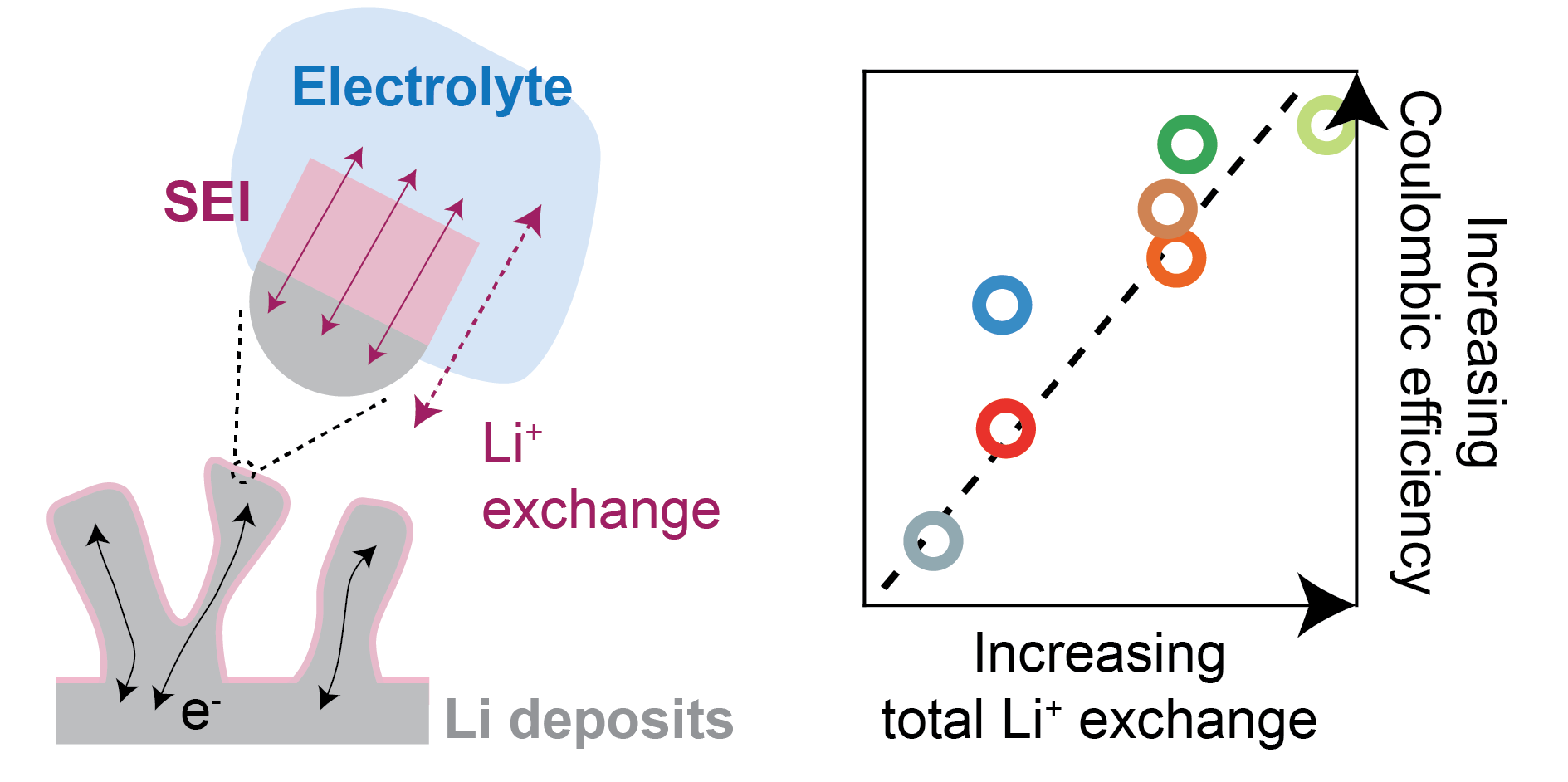G. M. Hobold, K.-H. Kim, and B. M. Gallant
Beneficial vs. Inhibiting Passivation by the Native Lithium Solid Electrolyte Interphase Revealed by Electrochemical Li+ Exchange
Energy & Environmental Science, 2023, 10.1039/D2EE04203G
[publisher link]
Abstract
Despite being a leading candidate to meet stringent energy targets of Li-ion batteries, the lithium (Li) metal anode has yet to achieve Coulombic efficiency (CE) requirements for long cycle life (>99.9%). These limitations derive from the native solid electrolyte interphase (SEI) which, among multiple functions, stabilizes and protects deposited Li. The SEI also plays a critical role in regulating Li+ exchange between the electrolyte and the electrode, but quantification of this effect has been non-straightforward, and a general relationship between Li+ exchange and CE has not been clearly elucidated to date. Using electrochemical impedance spectroscopy and voltammetry, we report self-consistent Li+ exchange values of native SEIs over a range of relevant electrolytes with CE spanning 78.0% to >99%. CE and its retention at high rates are found to be positively correlated with the rate of SEI Li+ exchange. Additionally, SEI Li+ exchange rates increased during cycling in high-CE electrolytes, in some cases by an order of magnitude to exceed 10 mA/cm2, whereas for low-CE electrolytes they remained low (<1 mA/cm2), revealing a chemistry-dependent picture of SEI evolution with often-complex dynamics. The evolution in Li+ exchange unique to high-CE electrolytes also provides insights into the role and effectiveness of the formation cycle on Cu current collectors upon the first plating step. Altogether, these findings indicate that Li+ exchange governs several key processes related to Li deposition and cycling efficiency. Consequently, its quantification can help to guide future high-CE electrolyte design, particularly targeting high rates (> 1 mA/cm2).


Recent Comments